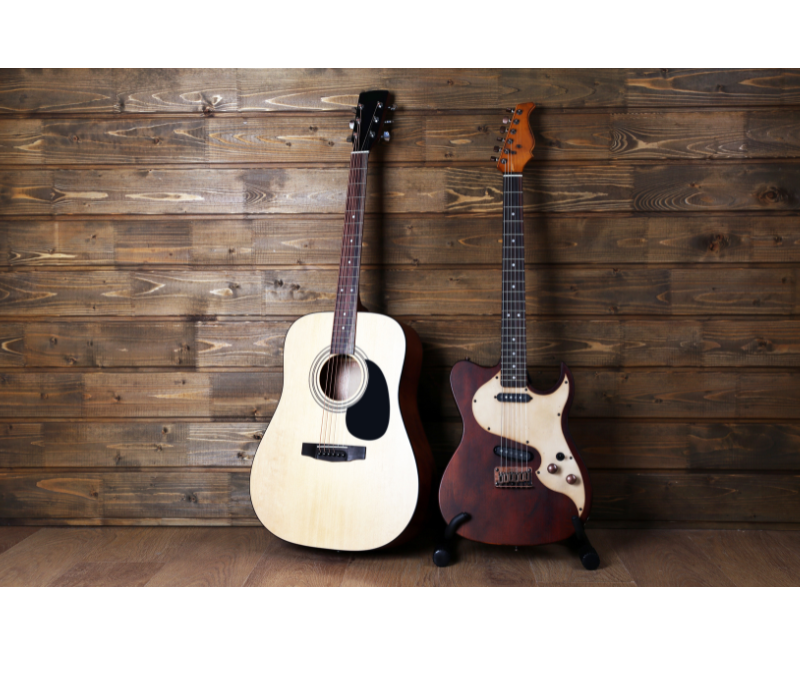If you want to jam confidently, write catchy melodies, and start soloing with ease, then the C major pentatonic guitar scale should be the first scale you master.
In this guide, you’ll learn:
✅ What the C major pentatonic scale is
✅ Why it’s essential for beginners and pros alike
✅ How to play it across the fretboard
✅ Real-world ways to use it in your playing
✅ How to build confidence improvising with it
Whether you’re picking up the guitar for the first time or revisiting the basics, this scale is your gateway to melodic freedom.
🎸 What Is the C Major Pentatonic Guitar Scale?
The C major pentatonic guitar scale is a five-note version of the full C major scale. Its notes are:
- C (root)
- D (2nd)
- E (3rd)
- G (5th)
- A (6th)
This scale leaves out the 4th (F) and 7th (B)—the tones that often create tension. By removing them, you’re left with only the most stable and melodic notes. That’s why the major pentatonic guitar scale sounds great over nearly any chord progression in the key of C major.
📘 Fun fact: “Pentatonic” literally means five tones.

❌ Stop Guessing. Start Shredding.
If you’re still fumbling through scale patterns and box shapes… it’s costing you progress.
FretDeck™ is the no-fluff system that shows you exactly how to master the fretboard—fast. Early access.
⚡️ This isn’t for dabblers. It’s for players who want results.
👉 Click here to join the pre-launch now
Early access. Limited rewards. Don’t wait.
💡 Why Learn the C Major Pentatonic Scale First?
✔ Simplicity – With just five notes, this scale is easy to remember and hard to make sound bad.
✔ Versatility – The major pentatonic scale works in rock, blues, folk, pop, and country—and it fits over countless chord progressions.
✔ Improvisation Made Easy – Because there are no clashing notes, you can solo freely and instantly sound musical.
✔ Foundation for Advanced Scales – Once you’ve mastered this scale, adding one or two extra notes unlocks the blues scale, the full major scale, and even modes like Mixolydian.
📍 How to Play the C Major Pentatonic Guitar Scale
Here’s a beginner-friendly box shape starting at the 8th fret (C root note):
e|------------------------8-10--|
B|--------------------8-10------|
G|---------------7-9------------|
D|-----------7-10---------------|
A|-------8-10-------------------|
E|-8-10-------------------------|
This pattern covers two octaves and is easy to memorize. Play it slowly at first, using alternate picking, and make sure every note rings clearly.
🔄 Connect It Across the Neck
To unlock the full power of the major pentatonic guitar scale, connect multiple positions across the fretboard.
Here’s the next position higher up:
e|---------------------------12-15--|
B|---------------------13-15--------|
G|-----------------12-14------------|
D|-------------12-14----------------|
A|-------12-15----------------------|
E|-12-15----------------------------|
🎯 Pro Tip: Practice shifting between both patterns. Use slides and position changes to start building smooth, fluid solos.
🎵 How to Use the C Major Pentatonic Guitar Scale
- Improvisation
Jam over a backing track in C major and solo using only these five notes. Focus on phrasing and feel rather than speed. - Writing Melodies
The major pentatonic scale avoids tension, making it perfect for creating singable riffs and hooks. - Playing Over Chords
This scale fits perfectly over common C major chords like:
- C major
- F major
- G major
- Stylistic Approaches
- Blues: Add bends, slides, and double stops
- Country: Use hybrid picking and open-string drones
- Pop: Keep things simple and rhythmic
- Phrasing Like a Pro
Add space, dynamics, and techniques like hammer-ons, pull-offs, and vibrato to breathe life into your solos.
📚 Practice Tips for Mastering the Scale
✅ Use Backing Tracks – Solo over jam tracks in C major to practice phrasing.
✅ Warm-Up with It – Make the major pentatonic guitar scale your daily warm-up.
✅ Mix in Techniques – Practice bends, hammer-ons, and slides using only these notes.
✅ Learn Solos That Use It – Try famous riffs like “My Girl” (The Temptations) and “Sweet Home Alabama” (Lynyrd Skynyrd).
💬 Real-World Example
One of our Guitar Freaks Hangout members, Jess, struggled with improvising in major keys. After just one week of focusing on the C major pentatonic guitar scale, she was confidently soloing over backing tracks and even writing her first melodies.
Why? Because this scale just works.
🎁 Free Guitar Resources
🆓 Download 27 FREE Guitar Charts
- Scales in every key
- Chord shapes
- Fretboard note maps
Perfect companions for practicing the major pentatonic guitar scale.
🚀 Learn Faster with FretDeck™
If you’re serious about mastering the fretboard:
✔ See all 60 pentatonic scales across the neck
✔ Get practice prompts that make every session effective
✔ Learn chord progressions and improvisations
👉 Get the FretDeck™ Pentatonic System
🎸 Join the Guitar Freaks Hangout (Discord)
Want to jam with other players, share progress, and get real feedback?
🎶 Join Guitar Freaks Hangout on Discord – and get exclusive access to my eBook Fret Logic FREE!

🎸 Join the Guitar Freaks Patreon!
Get SoloCraft E-Book FREE!
Join Guitar Freaks on Patreon and instantly unlock my full e-book SoloCraft—your step-by-step guide to fretboard mastery and crafting soulful solos.
New video lesson drops every Friday so you’ve always got a fresh, focused practice plan for the week.
👉 Don’t miss out—join now and grab your free copy!
🏁 Final Thoughts
The C major pentatonic guitar scale is a must-know tool for every guitarist.
It’s simple. It’s powerful. And it’s the perfect foundation for improvisation, songwriting, and developing your musical voice.
Start slow. Lock in the patterns. Improvise freely. And most importantly—have fun with it.
Now grab your guitar, hit a C note, and start jamming like a pro. 🎸🔥
For more inspiration, check out our guide on “Guitar Scales with Tabs: The Secret Maps of the Fretboard” – This article dives into understanding scale architecture across the fretboard, which pairs beautifully with your pentatonic scale guide
If you want to jam confidently, write catchy melodies, and start soloing with ease, then the C major pentatonic guitar scale should be the first scale you master.
In this guide, you’ll learn:
- ✅ What the C major pentatonic scale is
- ✅ Why it’s essential for beginners and pros alike
- ✅ How to play it across the fretboard
- ✅ Real-world ways to use it in your playing
- ✅ How to build confidence improvising with it
Whether you’re just picking up the guitar or revisiting the basics, this scale is your gateway to melodic freedom.










